There is no doubt about the massive popularity surrounding software-as-a-service, commonly referred to as SaaS. Estimates state that nearly nine of every ten businesses are using some variation of SaaS applications. And the growth is unlikely to slow. Further estimations on the ubiquity of SaaS for cloud-based workloads forecast a dominating three-quarter of the overall market by next year.
With such a consuming presence in the business world today, considering SaaS applications has nearly become a default for any industry. Yet, with such broad expansion comes criticism. The sheer growth of SaaS applications is a testament that they offer clear advantages. But what are the potential downsides of this technological phenomenon?
An organization should be prepared to understand both the advantages and disadvantages associated with SaaS. We examine a few of the most critical pros and cons in this article.
A brief introduction to SaaS
Organizations across industries are transitioning their operations to cloud-based environments. The simplest way to understand computing through the cloud is that this solution relies on storage and access through the internet instead of a hard drive or other types of local storage systems.
This mass-escalation of cloud-based solutions nearly guarantees the continued growth of SaaS software and applications. SaaS is one of three primary categories of cloud computing, utilizing a method of distributing software from third-party providers to customers over the internet.
Typical SaaS models involve the licensed use of an application through subscriptions. This distribution method stands in contrast to the historical use of software-on-premise, installed in the same building as the user. SaaS applications can often include resources that apply to communication, accounting, customer relations, business performance, and numerous other applications.
Examples of popular SaaS providers include Google Apps, Microsoft, Slack, Hubspot, Salesforce, Dropbox, and a long—ever-expanding—list of other purveyors.
Advantages of SaaS
The concept of computation as a public utility goes as far back as the 1960s, with the now-famous statements of John McCarthy. But the rapid increase of SaaS has been enabled by the wide adoption of the internet in the past two or three decades.
This section examines some of the advantages that have propelled SaaS applications.
Adaptable subscriptions
SaaS replaces the purchase of software-on-premise with a flexible subscription model to a customer’s individual needs. Subscriptions paid monthly, quarterly, or annually are the most common. They provide a modifiable and recurring operating expense that can help project budgets based on evolving operating costs.
Reduced costs
Replacing licensing costs associated with the purchase of software with amenable subscriptions fees most commonly results in lower initial costs for a customer. This exchange often allows a company to move its investment into operating expenditures rather than further capital expenditures.
A customer’s decreased reliance on hardware and software is also a reason for lower costs, resulting from the SaaS provider managing IT infrastructure that administers the software.
Less effort to access
Using cloud-based computing, SaaS’s applications require little more than an internet connection, browser, and user authentication. These resources can, in essence, be accessed from anywhere and at any time. Expending less effort to access commonly leads to reductions in cost and increases in productivity.
Ease of scaling
Due to SaaS’s modifiable nature of subscription-based models, a company is supported in maximizing the limits of its budget, with access to the most updated technology and professional services. Subscriptions can be altered to match increases or decreases of a company’s volume, permitting optimized performance and elevated expansion opportunities.
Refined implementation and maintenance
On-premise software resources typically required extensive deployment periods to install software across the entirety of an organization. Effort and productivity are saved when employing SaaS solutions, demanding only a functioning system and the initiation of access while the subscription is active.
Continued management and maintenance are also handled by SaaS, reducing labor and costs. These maintenance efforts also apply to regular software updates that mitigate any bugs or errors in the software.
Disadvantages of SaaS
Given the advantages of employing SaaS applications, an organization is likely to encounter the consideration of adopting these resources. It is critical to regard the potential disadvantages while considering a SaaS provider.
Less control
By relinquishing implementation and management to a third-party, a sacrifice to control over the software solution occurs. An organization becomes reliant on the version of software a provider offers while losing opportunities to make certain customizations for specific operational needs.
Challenges to connectivity
Connectivity relates to potential cloud-based failures or issues with the internet. SaaS functions rely on access to the internet and its cloud sources. Provider outages or unreliable internet connection can result in lost time, lower performance, or productivity challenges.
Security concerns
Cloud-based environments can result in confidential and essential information being store outside the organization’s server. This presents added concerns over this data’s security, which can impact privacy protection and access management—leading industries that work with sensitive data to be skeptical of SaaS services.
Service agreements
The expansion of SaaS has resulted in a diversity of providers who commonly use varying service level agreements. Such agreements can involve matters of data breaches and service failures. Navigating the details of various service agreements is critical to ensuring safety and security, resulting in an expenditure of time and confusion over the potential impact on a business.
Resources
There are many factors to consider with the adoption of a SaaS application. An organization must determine what portions of operations may benefit from SaaS. It must also traverse a substantial and ever-growing population of service providers.
Network Coverage has assembled a set of technology and business solutions to support your organization in maneuvering through this complex and critical environment.
Set up a consultation with Network Coverage for experienced advice and support.
